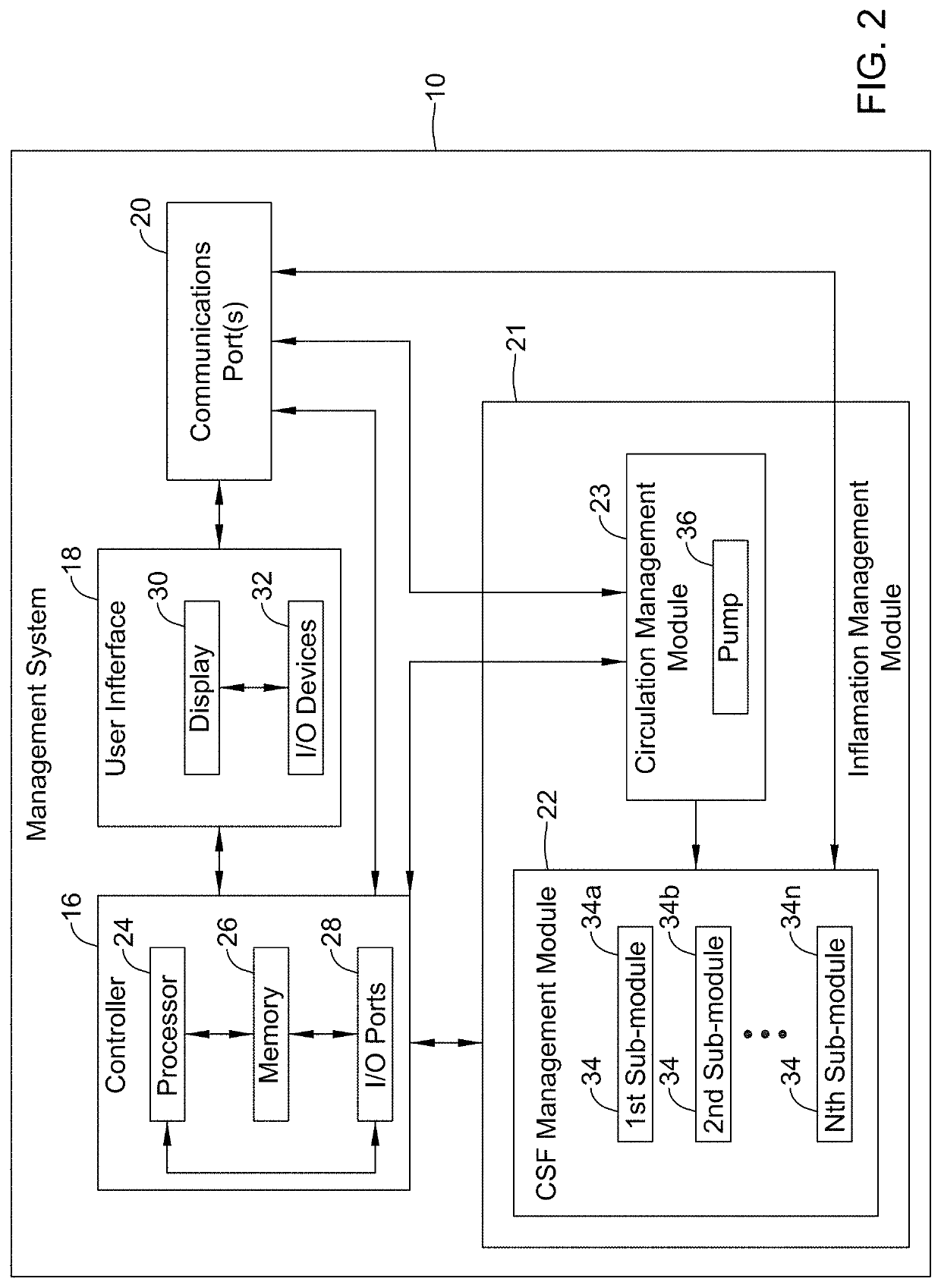Systems and methods for managing, monitoring, and treating patient conditions
a technology applied in the field of systems and methods for managing, monitoring and treating patient conditions, can solve problems such as difficulty in detecting patients, affecting the treatment effect, and affecting the treatment
- Summary
- Abstract
- Description
- Claims
- Application Information
AI Technical Summary
Benefits of technology
Problems solved by technology
Method used
Image
Examples
example indices
[0111 and / or indexed values indicative of an inflammation condition or other medical condition of the patient are disclosed in U.S. patent application Ser. No. 16 / 536,239 filed on Aug. 8, 2019, and U.S. patent application Ser. No. 16 / 536,267 (Attorney docket number 1421.1017101) filed on Aug. 8, 2019, which were incorporated by reference, above, for all purposes. Further, an example index or index value that may be calculated or determined by the management system 10 may be a patient's ICH Score, which may take into account a patient's GCS, age, ICH volume, IVH presence, and an anatomic location of hemorrhage. The ICH score is discussed in greater detail in Hemphill III, J. C., Bonovich, D. C., Besmertis, L. Manley, G. T., Johnston, S. C., April 2001, The ICH Score, American Heart Association, Volume 32, Issue 4, pages 891-897, which is hereby incorporated by reference for all purposes. When the management system 10 is configured to determine a patient's ICH score, the GCS and age o...
PUM
 Login to View More
Login to View More Abstract
Description
Claims
Application Information
 Login to View More
Login to View More - R&D
- Intellectual Property
- Life Sciences
- Materials
- Tech Scout
- Unparalleled Data Quality
- Higher Quality Content
- 60% Fewer Hallucinations
Browse by: Latest US Patents, China's latest patents, Technical Efficacy Thesaurus, Application Domain, Technology Topic, Popular Technical Reports.
© 2025 PatSnap. All rights reserved.Legal|Privacy policy|Modern Slavery Act Transparency Statement|Sitemap|About US| Contact US: help@patsnap.com



